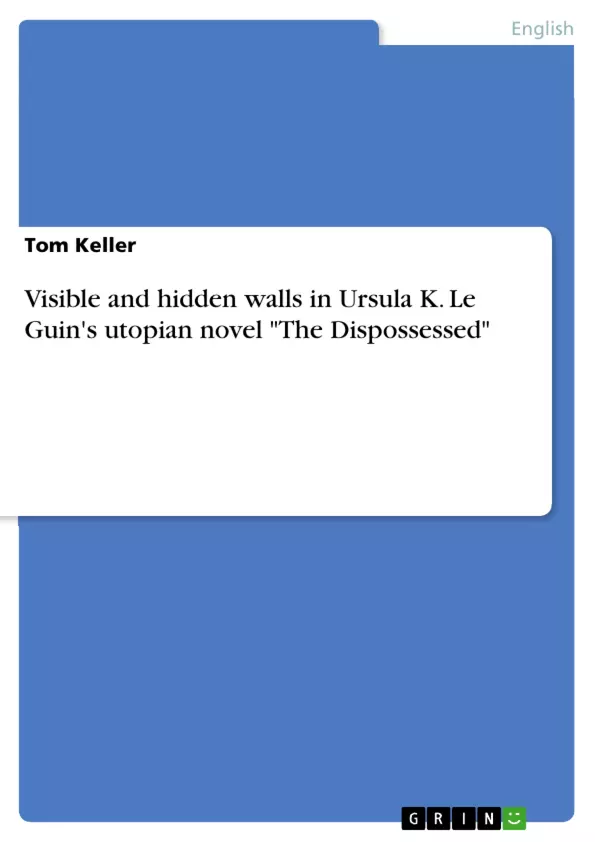In Ursula K. Le Guin´s utopian novel "The Dispossessed", published in 1974, one of the central images are walls, which exist in different shapes and various places, separating people or enclosing them. Some function like a prison, where nobody can break through, while others offer possibilities like freedom and choice. Furthermore, having two sides, walls appear to be ambiguous, depending on the view and interpretation of the individual. The novel describes several walls of different types like hierarchy, superiority, greed, possession, lies or physical boundaries. They appear throughout the novel and get demolished one after another. Shevek, the main protagonist, faces those boundaries, identifies them and tries to tear them down. Basically, the planets in the story are clearly separated, with them their people and also their cultures.
Anarres, at first sight, has just one physical wall, surrounding the port and simultaneously the whole society. Based on a revolution which had the aim of pure freedom and a brotherly society, Anarres has no governmental laws, having an anarchistic society with secretly growing boundaries. Urras is the opposite, consisting of many obvious physical and cultural walls. The people, greedy and egoistic, live between the boundaries, being disconnected by their possessions and their attitudes.
Inhaltsverzeichnis (Table of Contents)
- Utopia - Dystopia
- Theme
- Thesis
- Research
- Method
- Analysis
- Conclusion
- Works Cited
Zielsetzung und Themenschwerpunkte (Objectives and Key Themes)
The goal of this research is to demonstrate that Ursula K. Le Guin’s novel “The Dispossessed” contains not only visible and obvious, but also secret and hidden walls, which can only be identified through critical analysis. This analysis focuses on the concept of walls as physical and metaphorical boundaries, exploring how they shape individual and societal experiences in the novel.
- The nature and function of walls in both Anarres and Urras.
- The interplay between individual freedom and societal constraints.
- The concept of utopia and dystopia as presented in the novel.
- The role of Shevek as a protagonist who challenges established boundaries.
- The impact of personal choices and societal structures on individual development.
Zusammenfassung der Kapitel (Chapter Summaries)
The research begins by analyzing the concept of walls as presented in “The Dispossessed.” It examines the various types of walls that exist in the novel, including physical, social, and psychological barriers. The analysis explores how these walls affect the lives of the characters and the societies they inhabit.
The research then delves into the concept of utopia and dystopia, examining how these ideas are represented in the novel. It explores the strengths and weaknesses of both Anarres and Urras, highlighting the challenges of creating a truly utopian society.
The research concludes by examining the role of Shevek as a protagonist who seeks to break down walls and create a more equitable world. It analyzes his journey and the impact of his actions on both Anarres and Urras.
Schlüsselwörter (Keywords)
The main keywords and focus topics of the text include: utopia, dystopia, walls, boundaries, freedom, anarchy, individual choice, societal constraints, Shevek, Anarres, Urras, The Dispossessed, Ursula K. Le Guin.
- Quote paper
- Tom Keller (Author), 2011, Visible and hidden walls in Ursula K. Le Guin's utopian novel "The Dispossessed", Munich, GRIN Verlag, https://www.grin.com/document/319482



